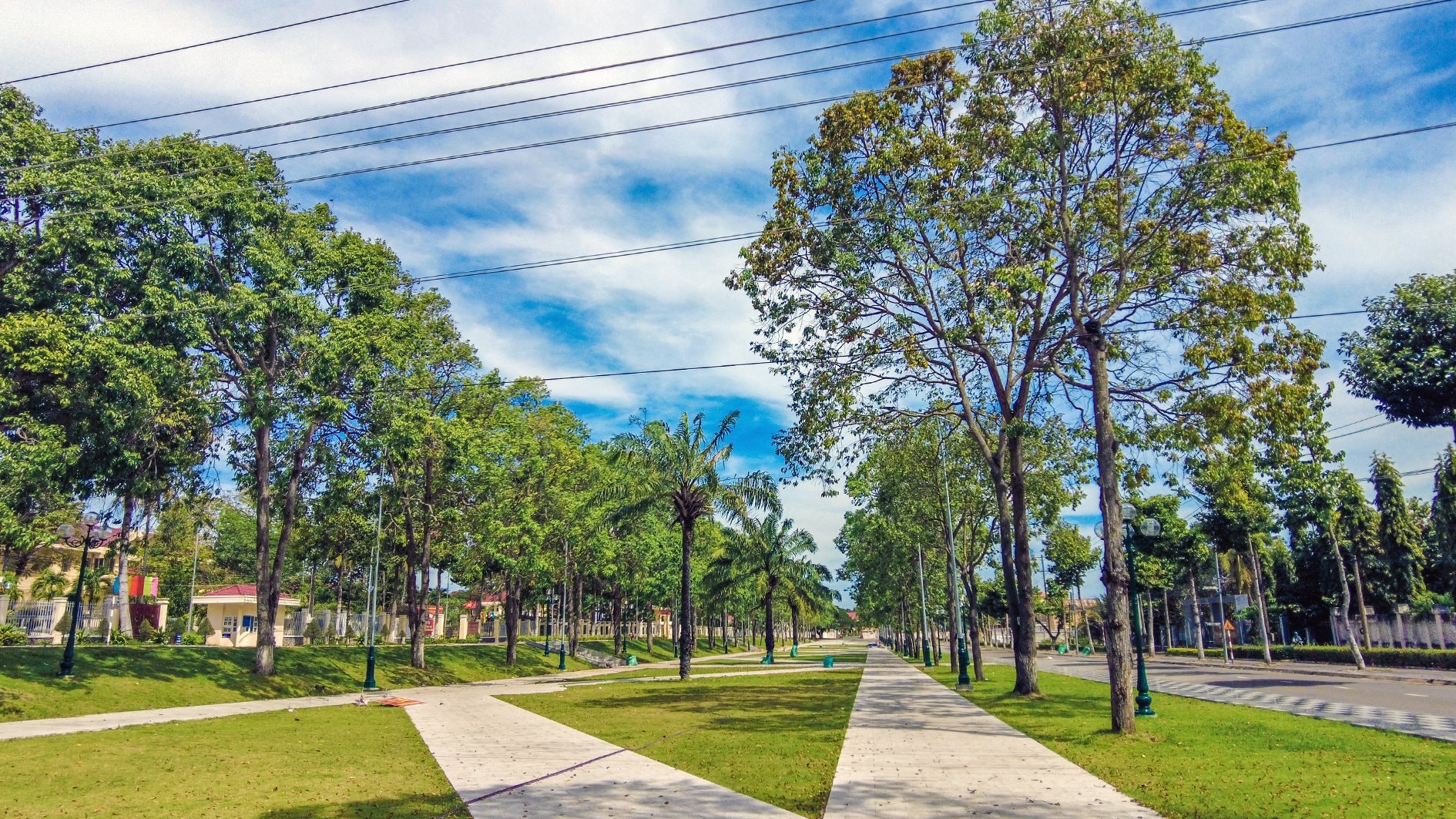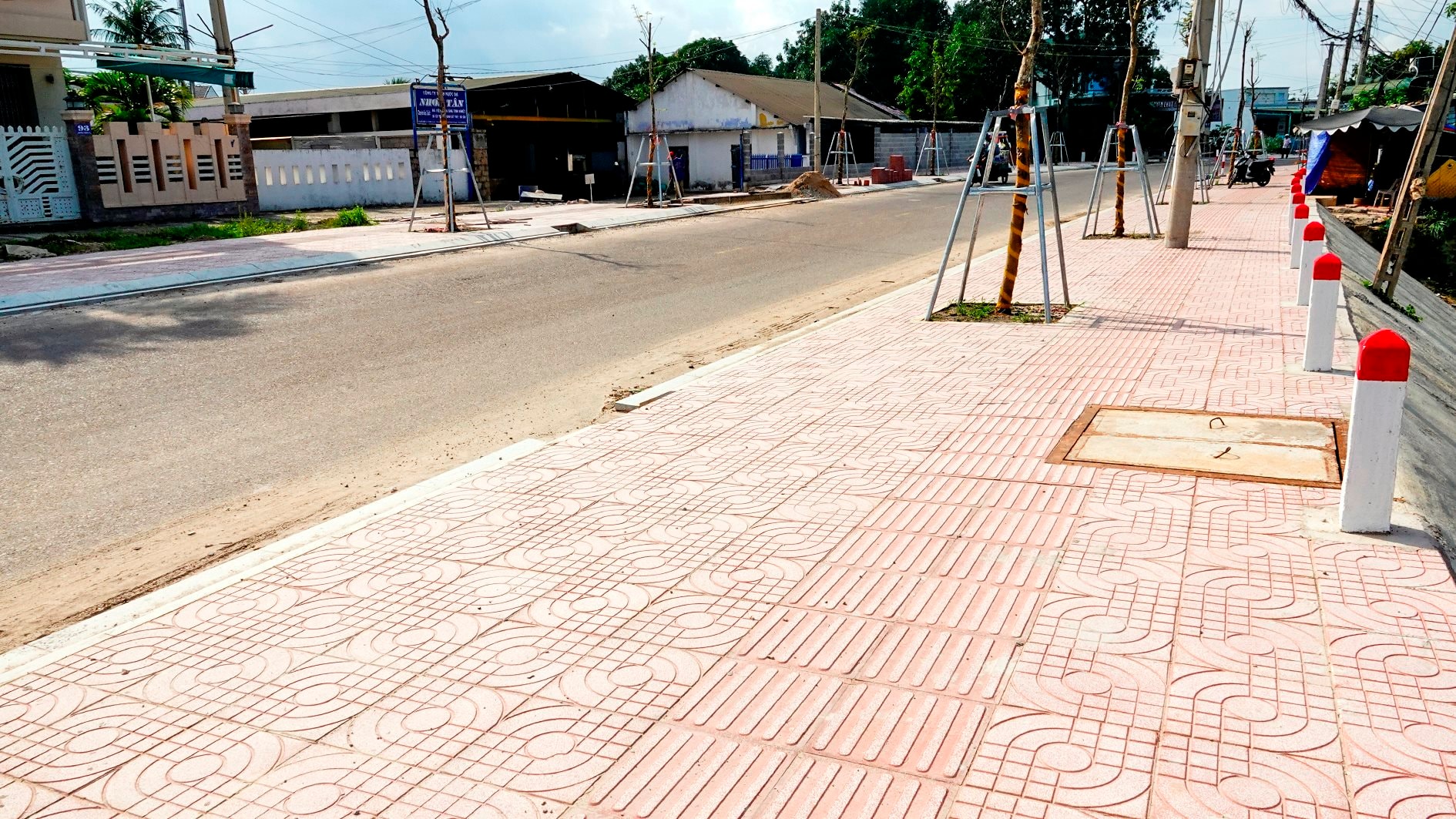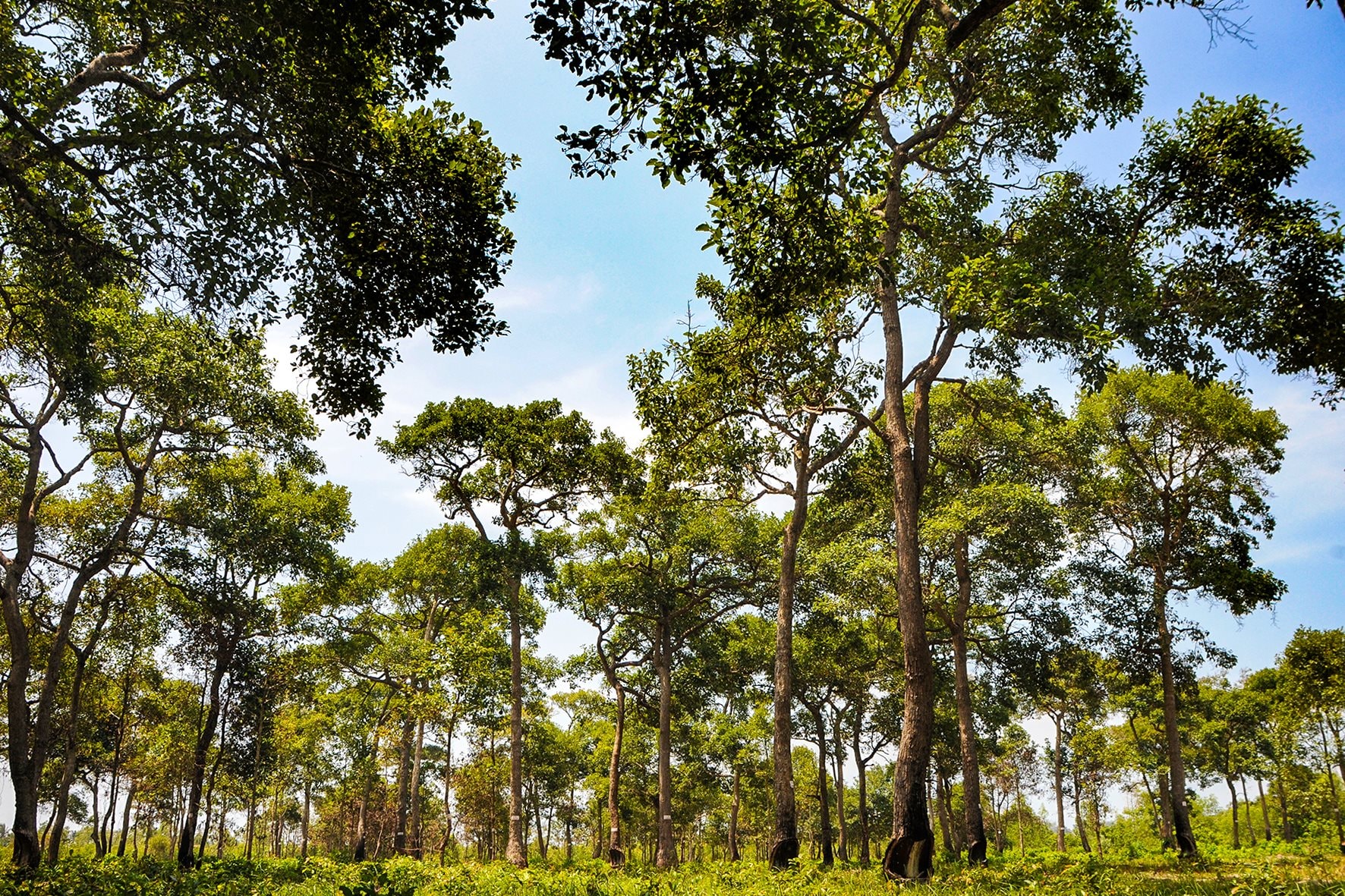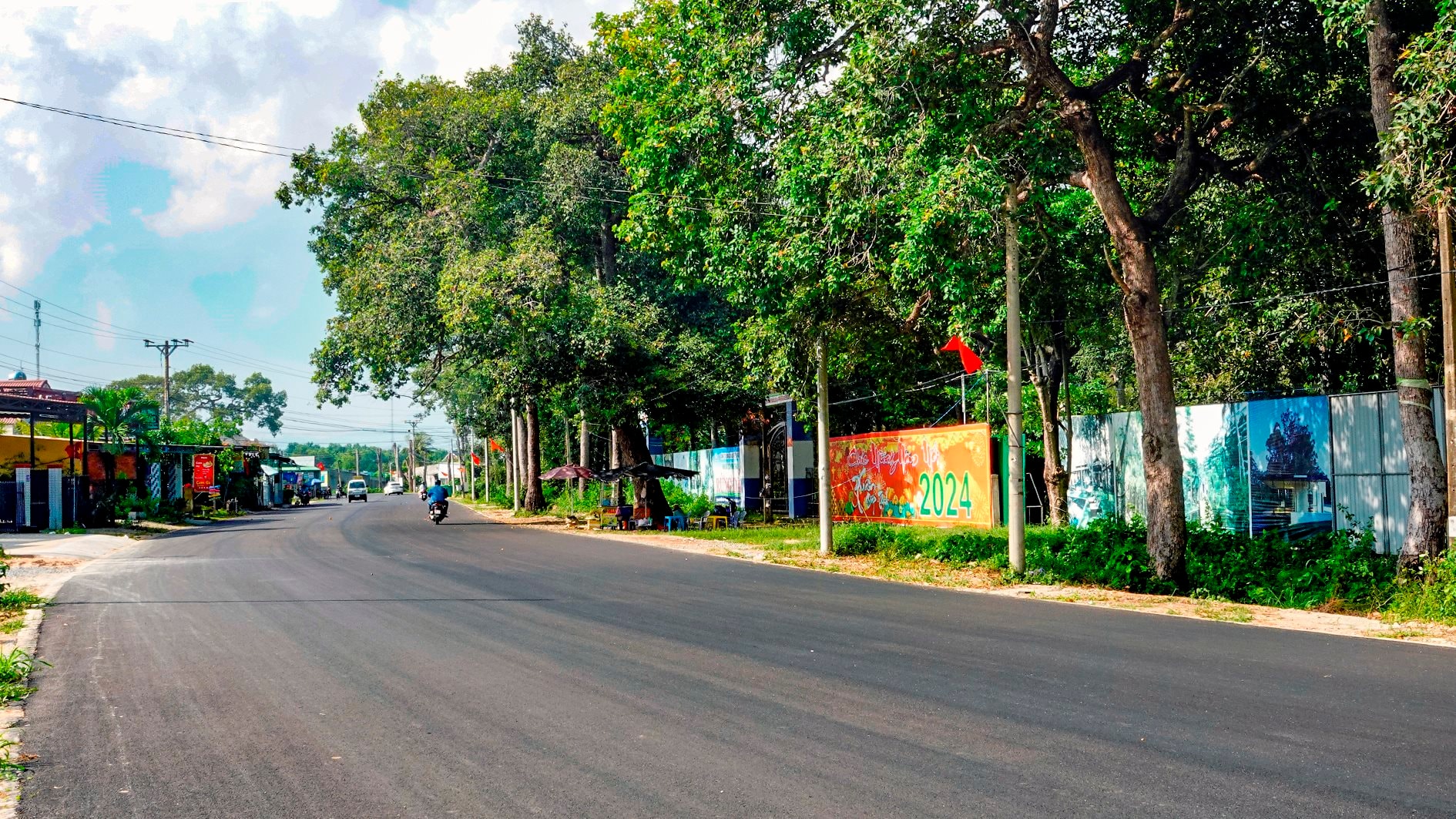
These days, as the rainy season peaks, a stroll around La Gi reveals a common scene on many streets: alongside the newly tiled sidewalks, rows of trees have just been planted. These are all golden shower trees, also known as “sưa vàng,” evenly distributed along Hùng Vương Street, Ngô Đức Tốn, and more. In a short time, La Gi will be adorned with bright yellow flowers, forming clusters that shyly peek through the foliage at the beginning of summer, eventually falling to create a golden carpet on the roads, releasing a pleasant fragrance similar to other places.


Green trees planted along Hùng Vương Street, La Gi. The sidewalk on Nguyen Truong To has just been tiled.
Typically, this vibrant imagery peaks in April when the streets of Nguyen Truong To and Le Minh Cong showcase clusters of golden “lim sẹt” flowers, with elongated fruits swinging gently, measuring 10-12 cm. On the roads leading to La Gi beach, such as Cach Mang Thang Tam and Nguyen Du, delicate purple trumpet flowers have started to bloom in the wind. Moreover, the pink trumpet flowers on Hoang Dieu and Ngo Gia Tu streets add a splash of pink, enhancing the sweetness, romance, and poetic charm of La Gi’s coastal town for lovers. Furthermore, starting in April, clusters of “móng bò” flowers spread their gentle purple hues throughout the streets from Bac Ai, Cach Mang Thang Tam, Nguyen Du to Nguyen Tri Phuong, Tran Khanh Du, and Chu Van An, continuing until the end of June each year.

Green trees lining Le Minh Cong Street..
These colorful flowers seem to gather, bringing a harmonious beauty to the streets of the town while also adding a unique touch to La Gi’s coastal charm. This contributes to the urban green space, which, in the journey of building new rural areas from 2021 to 2025, the town aims to achieve five criteria, one of which is that the area of public green space in urban areas must be at least 5 square meters per person.
According to the La Gi Urban Management Department, a total of 500 golden shower trees will be planted along the streets of the town in 2024. This year, thanks to the completion of many sidewalk paving projects and additional funding, the planting of green trees has increased compared to previous years. From 2019 to 2023, approximately 1,500 trees, including pink trumpet trees, golden shower trees, lim sẹt, and móng bò, have been planted along the town’s streets. The total number of green trees along the streets in the town is about 5,000, not including trees in parks, public areas, government offices, and private gardens.

There are forests in the City
In a context where forests are continuously preserved but still face hidden destruction, if La Gi residents take pride in their living environment, they immediately think of the 24-hectare casuarina forest located in Tân Bình Commune, which borders three streets: Hung Vuong, Nguyen Chi Thanh, and Nguyen Tri Phuong. More than 20 years ago, this 24-hectare forest was part of sub-region 393, designated as a coastal protective forest, according to Decision No. 09/QĐ-UBND dated February 12, 2001, by the provincial People’s Committee approving the project for the planning of three types of forests in Binh Thuan Province for the period 2000-2010, and Decision No. 212/QĐ-CT.UBND dated February 12, 2001, by the provincial People’s Committee issuing the system of forest sub-regions under the planning of three types of forests in Binh Thuan Province for the period 2000-2010. In 2007, the 24-hectare casuarina forest was reclassified as production forest under sub-region 417, according to Decision No. 674/QĐ-UBND dated March 13, 2007, by the provincial People’s Committee approving the forest protection and development plan for Binh Thuan Province for the period 2006-2010, and Decision No. 674/QĐ-UBND dated March 13, 2007, by the provincial People’s Committee adjusting the planning of three types of forests in Bình Thuận Province for the period 2006-2010.

Casuarina Forest in the Heart of the City. Photo: N. Lân.
According to Decision No. 320/QĐ-TTg dated March 8, 2022, by the Prime Minister, towns and cities under provincial-level administration that complete their rural development tasks for the period 2021-2025 must meet five criteria. Specifically, these criteria include: 100% of the communes in the area achieving the new rural standard; at least one commune in the area achieving the enhanced new rural standard; 100% of the wards in the area achieving the civilized urban standard; a citizen satisfaction rate regarding the results of the rural development efforts in the town or city of 90% or higher; and a minimum of 5 square meters of public green space per person in urban areas.




















.jpg)





.jpeg)

.jpeg)


.jpeg)


